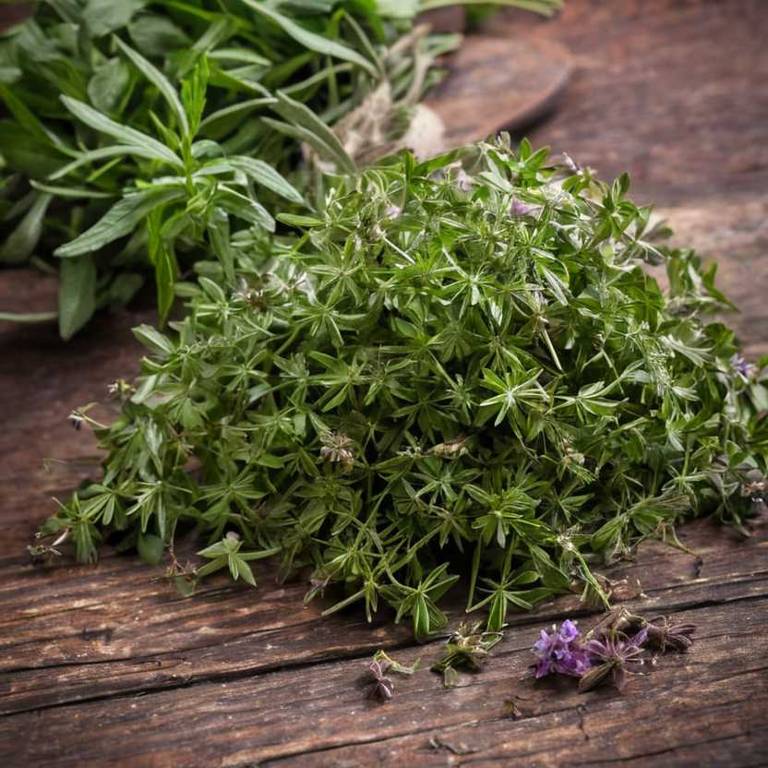By Leen Randell
Updated: Jul 20, 2024
10 Medicinal Constituents Of Valeriana Officinalis (Valerian)

Valeriana officinalis has active constituents such as valerenic acid, isovaleric acid, and valepotriates.
These compounds contribute to the plant's sedative, anxiolytic, and muscle relaxant properties. Valerian's constituents can improve sleep quality, reducing stress and anxiety, and alleviate restlessness and insomnia, enabling individuals to wake up feeling refreshed and energized.
Regular use of valerian supplements or teas may also promote relaxation and reduce muscle spasms, enhancing overall well-being.
This article explains in details the 10 best active constituents of Valeriana officinalis.
1. Isovaleric acid
Valeriana officinalis isovaleric acid is a naturally occurring compound found in the roots of the plant.
It belongs to a class of fatty acids called branched-chain fatty acids and has been shown to have several biological activities, including antimicrobial, anti-inflammatory, and antispasmodic properties.
Isovaleric acid has also been used as a flavoring agent in foods and beverages due to its sweet, fruity aroma.
2. Valerenic acid
Valeriana officinalis valerenic acid is a bioactive compound isolated from the roots of the plant.
It is a sesquiterpene lactone with sedative and anti-anxiety properties, responsible for the calming effects often attributed to valerian root extracts.
Valerenic acid has been traditionally used in herbal medicine to treat insomnia, restlessness, and nervousness, and more recently has been investigated for its potential therapeutic applications in anxiety disorders and sleep disturbances.
3. Valepotriates
Valeriana officinalis valepotriates is a unique and valuable compound found in the root of this perennial flowering plant.
These compounds have been extensively studied for their potential medicinal properties, particularly in relation to anxiety, insomnia, and other sleep disorders.
Valepotriates are believed to interact with GABA receptors in the brain, promoting relaxation and sedation, making valerian a popular natural remedy for individuals struggling with stress and restlessness.
4. Sesquiterpenes
Valeriana officinalis sesquiterpenes is a unique class of compounds responsible for its distinct herbal properties.
These sesquiterpenes are primarily composed of valerenic acid and isovaleric acid, which have been shown to possess anxiolytic and sedative effects. They work by interacting with GABA receptors in the brain, promoting relaxation and reducing anxiety levels.
This natural compound has been used traditionally to treat insomnia, restlessness, and other sleep disorders.
5. Valeodine
Valeriana officinalis valeodine is a bioactive compound extracted from the roots of the plant Valeriana officinalis.
It has been traditionally used for centuries to treat various health conditions, including anxiety, insomnia, and restlessness. Valeodine exhibits sedative and anti-anxiety properties, making it a popular ingredient in herbal remedies.
Its ability to interact with GABA receptors in the brain helps regulate sleep patterns and reduce stress levels, promoting relaxation and calmness.
6. Ferulic acid
Valeriana officinalis ferulic acid is a phenolic compound found in the roots and rhizomes of this herb.
It is believed to contribute to the plant's sedative and anxiolytic properties, and has been shown to exhibit antioxidant and anti-inflammatory activities.
Ferulic acid has also been isolated from other plants, but its concentration and composition are unique to Valeriana officinalis, making it a valuable component of traditional medicine and research applications.
7. Coumarin
Valeriana officinalis coumarin is a naturally occurring compound found in the roots and rhizomes of this perennial flowering plant.
This volatile oil has been traditionally used for centuries to treat various health issues, including insomnia, anxiety, and restlessness due to its sedative properties.
Coumarin has also shown anti-inflammatory and antimicrobial activities, making it a popular ingredient in herbal remedies.
8. Lignans
Valeriana officinalis lignans is a type of phytochemical compound found in the roots and rhizomes of the plant.
These compounds have been shown to possess a range of biological activities, including antioxidant, anti-inflammatory, and antimicrobial properties.
Lignans are also believed to contribute to valerian's traditional uses as a sedative and anxiolytic agent, making it a popular ingredient in herbal supplements for promoting relaxation and improving sleep quality.
9. Cinnamic acid
Valeriana officinalis cinnamic acid is a phenolic compound isolated from the root of this plant.
It has been shown to possess various biological activities, including anti-inflammatory and antioxidant properties.
Cinnamic acid has been reported to exhibit inhibitory effects on nitric oxide production, which may contribute to its potential therapeutic applications in the treatment of cardiovascular diseases and other disorders related to oxidative stress.
10. Vanillic acid
Valeriana officinalis vanillic acid is a naturally occurring compound found in the roots of this herb.
It is a minor constituent of valerian essential oil and has been reported to possess significant bioactive properties.
Vanillic acid has been shown to exhibit antimicrobial, antioxidant, and anti-inflammatory activities, making it a potential therapeutic agent for various diseases, including infections, inflammation, and cancer.